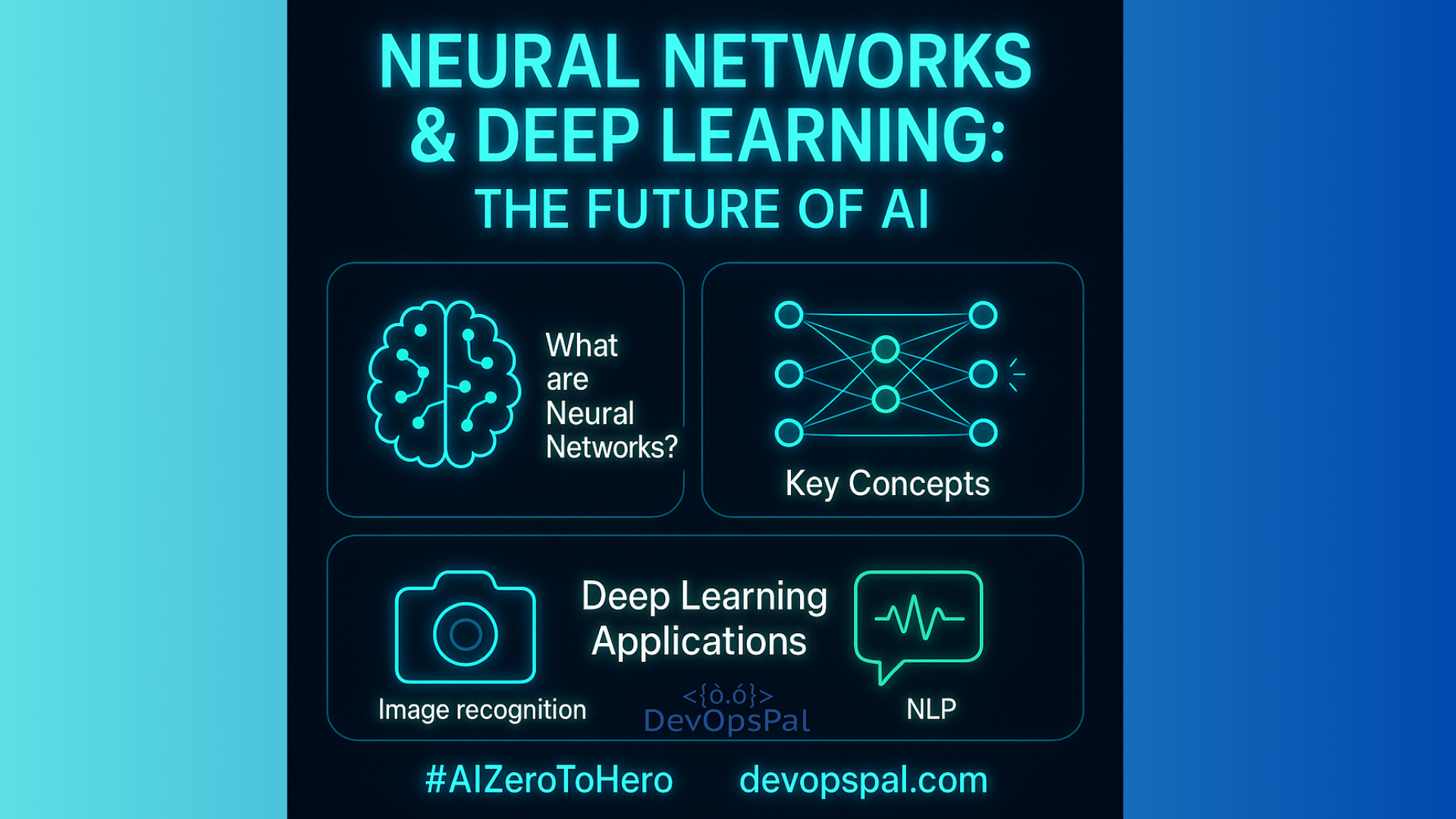Introduction:
Welcome back to the AI Learning Journey! We’ve covered supervised and unsupervised learning. Now, let’s dive into one of the most exciting and powerful areas of AI: Neural Networks and Deep Learning.
What are Neural Networks?
Neural networks are a set of algorithms, modeled loosely after the human brain, that are designed to recognize patterns. They are the backbone of deep learning and have revolutionized fields like computer vision, natural language processing, and more.
Key Concepts:
- Neurons: The basic building blocks of a neural network, inspired by biological neurons.
- Layers: Neurons are organized into layers: an input layer, hidden layers, and an output layer.
- Weights and Biases: Parameters that determine the strength of connections between neurons.
- Activation Functions: Introduce non-linearity, allowing the network to learn complex patterns (e.g., ReLU, sigmoid, tanh).
- Forward Propagation: The process of feeding input data through the network to produce an output.
- Backpropagation: The process of adjusting weights and biases to minimize the difference between the predicted output and the actual output.
Deep Learning:
Deep learning is a subset of machine learning that uses neural networks with many layers (deep neural networks) to analyze data. These deep networks can automatically learn hierarchical representations of data, making them incredibly powerful for complex tasks.
Building a Simple Neural Network with Keras:
Import Libraries:
import tensorflow as tf
from tensorflow import keras
from tensorflow.keras import layersDefine the Model:
model = keras.Sequential([
layers.Dense(64, activation='relu', input_shape=[10]), # Input layer with 10 features
layers.Dense(64, activation='relu'), # Hidden layer
layers.Dense(1) # Output layer
])Compile the Model:
model.compile(optimizer='adam',
loss='mse',
metrics=['mae'])Train the Model:
# Assuming you have X_train and y_train
model.fit(X_train, y_train, epochs=10)
Key Concepts in Deep Learning:
- Convolutional Neural Networks (CNNs): Specialized for processing images and videos.
- Recurrent Neural Networks (RNNs): Specialized for processing sequential data (e.g., text, time series).
- Transfer Learning: Using pre-trained models to speed up training and improve performance.
Next Steps:
- Explore different types of neural networks and activation functions.
- Learn about CNNs for image recognition and RNNs for sequence data.
- Experiment with transfer learning using pre-trained models.
- Share your progress and questions using #AIZeroToHero.
Conclusion:
Neural networks and deep learning are powerful tools for solving complex AI problems. By understanding the key concepts and experimenting with different architectures, you’ll be well-equipped to build cutting-edge AI applications.

